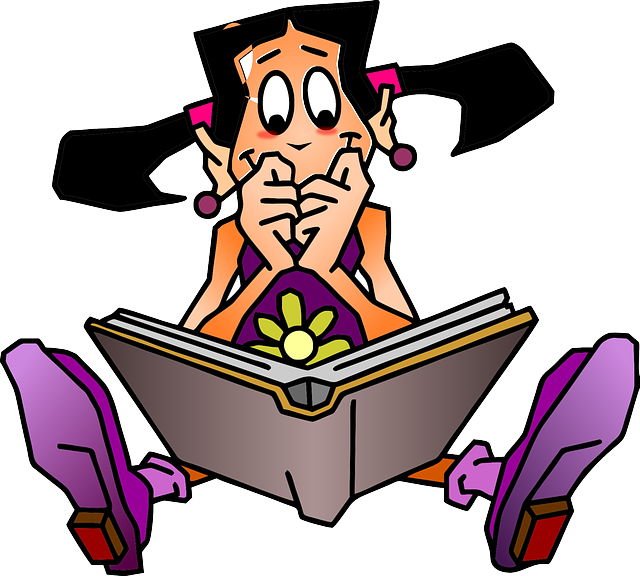If you’re a budding author or a seasoned storyteller, there’s one element that holds the power to captivate your readers like no other—rising action. It’s that exhilarating rollercoaster ride, the heart-pounding crescendo that keeps us on the edge of our seats, craving more. But what exactly is rising action, you may ask?
This blog post will delve into the essence of rising action definition, unraveling its secrets, and revealing how you can harness its power to take your thriller writing to unprecedented heights. So, fasten your seatbelts and dive into the electrifying world of rising action in thrillers.
Introducing the concept of rising action in storytelling
Rising action is a storytelling technique that creates expectations and builds tension in a narrative. It often provides information leading up to the story’s climax, the turning point in the text. Rising action introduces characters, conflicts, and events leading to an intense moment or resolution.
Consider it like this: Rising action occurs between the inciting incident and the climax. It’s the part of a story that brings out all those exciting moments, where you see how characters react to obstacles and challenges they encounter in their journey.
In thrillers, rising action takes on an even greater significance as it heightens tension and suspense throughout the story. As events unfold, readers become increasingly invested in the story as they wait to discover what will happen next.
Breaking down the elements that make rising action
When constructing rising action, there are a few key elements to remember:
The first is conflict:
All stories need some internal or external conflict (a problem) to be resolved. This can be anything from the protagonist trying to solve a mystery to an antagonist trying to take over the kingdom.
The second is tension:
This is what makes the story exciting. It’s the moments when the stakes are high, and everything hangs in the balance. The protagonist must often make difficult decisions and take risks to reach their goal.
The third is resolution:
Finally, there must be a resolution at the end of rising action. This can either be success or failure for the protagonist, but they must ultimately conclude.
Using suspenseful plot points to create an exciting story arc
Rising action is used to construct a story arc that will keep readers guessing until the end. Plot points and cliffhangers are often used to create suspense and build anticipation for the resolution of an event or situation.
In a thriller novel, a protagonist may stumble across evidence that seems to incriminate them in a crime they didn’t commit. The rising action begins as the story progresses, and more and more clues are revealed, making it seem as though they are guilty until the truth is told in a dramatic climax. This builds suspense throughout the novel, drawing readers closer to the story with each page-turn.
Delving deeper to demonstrate this further, here are some examples

– Let’s look at the famous TV series Breaking Bad. The show follows Walter White, a chemistry teacher diagnosed with terminal cancer who decides to use his skills in chemistry to manufacture and sell crystal meth to provide for his family before he dies.
Throughout the series, the writers build up intense moments of suspense through several schemes that keep audiences glued to their seats. From Walt’s first interactions with drug dealers needing his expertise right through to his facing off against rival gangs as he rises through the ranks of criminal masterminds, we’re constantly wondering what will happen next—and whether or not Walt will survive it all!
The suspenseful nature of these schemes also serves as part of a larger narrative arc that keeps us hooked—from seeing how Walt conquers each obstacle (or fails!) as he embarks on this dangerous new journey, all while dealing with his mortality looming over him throughout. It creates a thrilling rollercoaster ride for viewers, ultimately leading them to the exciting conclusion at the season finale—but not without intense drama!
By using these types of sustained periods of rising tension mixed with short bursts released throughout Breaking Bad‘s story arc, its writers were able to craft one amazing big-picture narrative adventure out of their characters’ plight—something we can learn from when trying our hand at creating our own stories for others to enjoy!
– Another excellent example is the horror novel Silent Hill by Keiichiro Toyama. In the book, a mysterious fog envelopes an abandoned town where monsters roam freely and strange events occur nightly. This creates a growing dread as our protagonist moves closer to his inevitable confrontation with some unknown evil force lurking in the shadows.
Our hero makes discoveries along the way that lead us to believe we may know what he’s up against—until it’s revealed as the climax occurs that we had no idea how powerful his adversary was or where this dark journey would take him!
This book’s suspenseful use of plot points keeps you guessing until its gripping conclusion—creating an exciting story arc from beginning to end!
Crafting believable and engaging characters to maintain the reader’s attention

Rising action in thrillers is essential to the story structure and relies heavily on the development of believable characters. These characters must be engaging and relatable so readers can connect with them emotionally.
The protagonist should have a clear goal or mission, and they must face obstacles while trying to reach this goal. This will create tension as readers struggle with the protagonist to pursue the dream.
The antagonist should be an equally compelling character that poses a challenge to the protagonist. They should also be presented as a real and believable threat, adding to the tension of rising action in thrillers.
Creating conflicts and challenges for your protagonist to overcome
Conflicts and challenges should be created to further the story and keep readers guessing. These can come in the form of physical obstacles, difficult decisions, or moral dilemmas. For example, a protagonist may choose between two paths to reach their goal.
These conflicts should be layered throughout the rising action to build tension until the climax. This will leave readers wondering what the outcome of each conflict will be and how it will affect the protagonist’s mission.
Incorporating unexpected twists and turns for a thrilling climax

In thrillers, rising action should lead to a thrilling climax that will leave readers wanting more. To make the ending as exciting as possible, unexpected twists and turns should be incorporated throughout the story.
Here are some examples to explain what unexpected twists and turns mean:
– One example could be a sudden change in tone or direction from one character to another—for instance, let’s say you have a villain who has been acting hostile since the beginning. Still, right before the climax, they unexpectedly perform an act of kindness toward their enemy, leaving everyone surprised at what just happened.
– Or the protagonist may find themselves in a seemingly impossible situation with no way out. Then, at the last minute, they devise an ingenious plan to save the day. These unexpected twists and turns can create suspense and keep readers guessing until the end.
– A third possibility is when characters reverse roles or expectations completely. Imagine if your hero had assumed responsibility for something throughout most of the novel, only for them to realize towards its end that their love interest was responsible all along? Many possibilities like this can add excitement and suspense at just the right moment in your story build-up.
– A classic example of an unexpected twist at the climax is Agatha Christie’s novel, “And Then There Were None.” Ten strangers are invited to stay in a lonely mansion on an isolated island in this thriller. Little do they know that their host has planned to murder them all individually. As they try desperately to discover who their killer is and how to save themselves, they begin dying off one by one without any rhyme or reason.
Finally, it’s revealed that everyone was complicit in the murders in some way! The unexpected twist leaves readers stunned and gives them chills as they realize that no one is quite what they seem.
Bringing it all together – how rising action can maximize reader engagement

When all these elements are combined, rising action can create an engaging and suspenseful story that will keep readers on the edge of their seats. It should build up tension until the end with cliffhangers that leave readers wanting more.
Rising action examples in successful thriller stories
Let’s look at some examples of rising action in thrillers that will make your heart race and leave you on the edge of your seat!
– The Da Vinci Code by Dan Brown is an excellent example of rising action in a thriller. The novel follows Robert Langdon, a professor of symbology who must decipher hidden clues to unravel the mystery surrounding an ancient secret. As he moves closer and closer to the truth, he is pursued by enemies who will stop at nothing to prevent him from uncovering it.
– In The Girl with the Dragon Tattoo, rising action is used effectively to keep readers hooked on the story. The novel follows a journalist and computer hacker who uncover the truth behind a missing girl, connecting her disappearance to an immense net of lies and secrets. The suspense increases as they unravel clues and gather evidence; readers can’t wait to see how it turns out.
– Finally, we have The Silence of the Lambs by Thomas Harris. This gripping thriller follows FBI agent Clarice Starling as she attempts to track down a serial killer who has been terrorizing the country. As Clarice delves deeper into the case, the tension builds, and readers can’t wait to see if she can outwit her adversary.
Conclusion
Writing a story that captivates and engages readers is an art form. It takes practice, ingenuity, and knowledge of the tools available. Rising action, whether careful and gradual or unexpected and shocking, is one of the most effective tools for creating a compelling story arc, entrancing readers to keep up with it.
You can write rising action by carefully crafting believable characters, utilizing insights into human behavior, incorporating plot points with suspenseful tension, and introducing unpredictable twists and turns. Writers can create rising action, leading to powerful climaxes and intensifying reader engagement.
Remembering these basic principles will equip any writer with the necessary tools to design a story that captures attention and maintains excitement throughout its entirety.
The opportunities are endless, so don’t be afraid to get creative and explore different ways of using this powerful tool to move your story forward. Whether it’s a psychological mystery or an action-packed tale of espionage, effective use of rising action can help you tell a riveting story that will keep readers hooked until the end.
Thank you for taking the time to read. May you find success and joy in all that you create.
If you’re working on your first novel and are looking for more help with your writing, please check out my other articles at https://ullahakanson.com/blog/
Best of luck with your writing!
Ulla
www.ullahakanson.com

